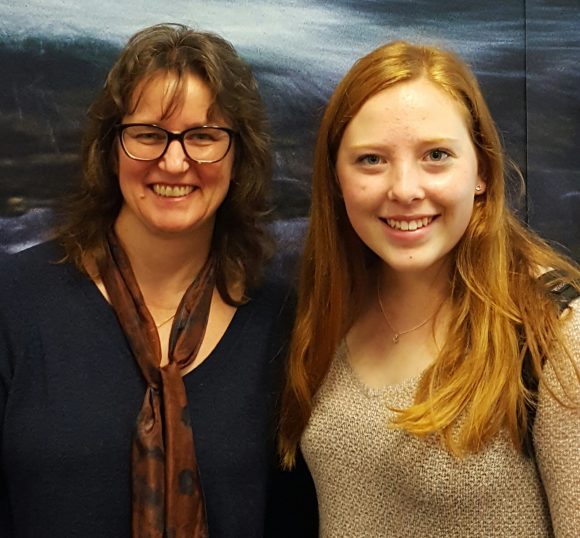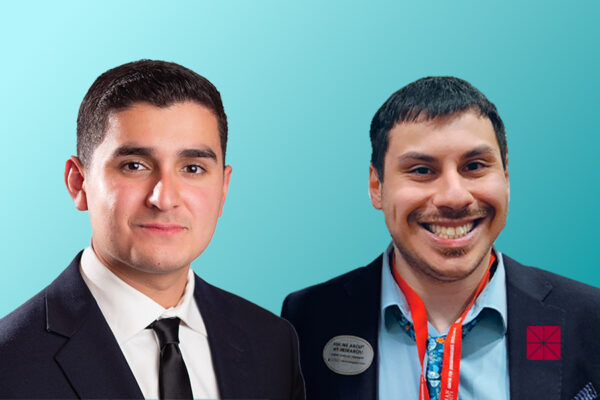Somewhere among the nearly 1,000 U.S. service members laid to rest in the Normandy American Cemetery along the coast of France, lies one whose story will soon be brought to life by a Chapman University graduate student as part of a unique history project.
Judy Richonne, a student in Chapman’s MA in War and Society program and a high school history teacher, is part of a team selected for the Normandy: Sacrifice for Freedom Albert H. Small Student and Teacher Institute, a program offered by National History Day.

War and Society graduate student Judy Richonne, left, and her high school history student Sonia Kelly have been selected for Normandy: Sacrifice for Freedom Albert H. Small Student and Teacher Institute.
The prestigious history program is aimed at remembering the fallen military members buried at the cemetery, largely dedicated to those who died during the pivotal Normandy landings of June 1944. Richonne and her own student, Sonia Kelly, are one of just 15 teams across the nation selected for the project. Together they will choose and research one of the war dead and create a Silent Hero memorial webpage portraying that individual’s life before the war and their military contributions.
In addition to the memorial website, the team members are charged with sharing their research throughout the community at schools and to service clubs and community groups.
The project especially resonates with Richonne, who teaches at University High School in Irvine. For 10 years she has helped her own students compete in Chapman’s
Holocaust Art and Writing Contest through the Rodgers Center for Holocaust Education. The contest challenges middle and high school students to study Holocaust survivors’ oral histories and share a story through a creative work, from poetry to film.
Like the Chapman contest, the Normandy project works to make history meaningful to future generations and to honor those who perished or suffered in its darkest moments.
“The idea is that you have this massive data base and no one really looks at it, unless you’re a family member,” Richonne says. “Creating the website and recognition of an individual is a way to not lose that voice. They’re gone. We need to be their voice.”
In June the teams travel to Washington, D.C., to finish their research with help from the National Archives and a few days of courses taught by historians. Then they depart for the final leg of their journey – a visit to Normandy, where they continue their lessons and visit historic sites, including the D-Day beaches. To close, students deliver a graveside eulogy they’ve written for their Silent Hero.
Learn more about the project in thisPBS Newshour feature.
(Display image at top/Courtesy of National History Day®)





Add comment